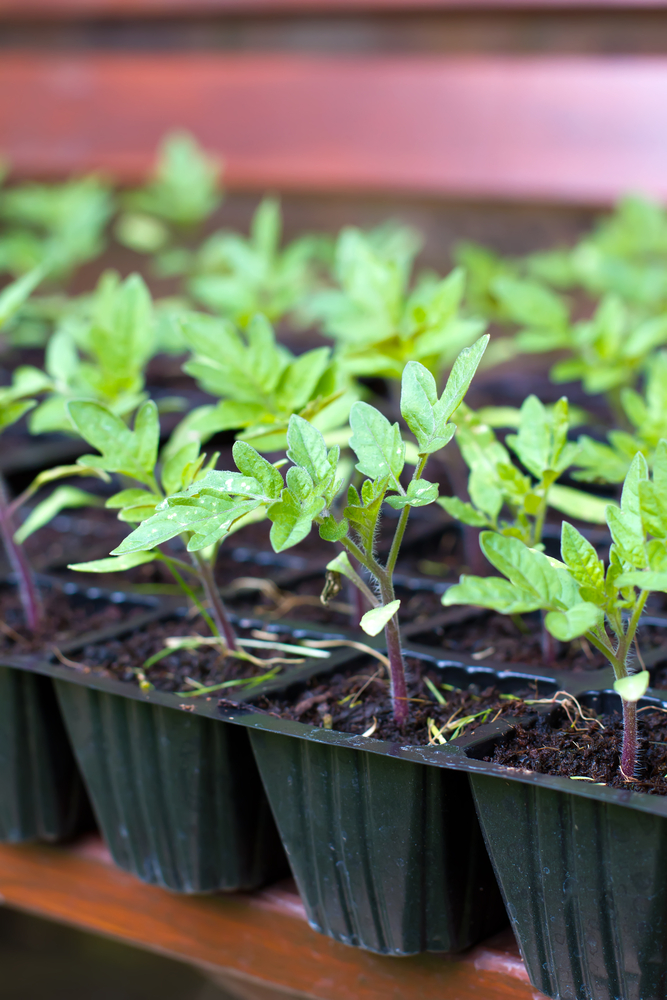 One
of the best things about gardening is that there are as many “right”
ways to do things as there are gardeners. As for the tomato planting
debate, there are at least two camps - those who plant as early as
possible and those who wait until the time is right and the weather is
“settled.”
One
of the best things about gardening is that there are as many “right”
ways to do things as there are gardeners. As for the tomato planting
debate, there are at least two camps - those who plant as early as
possible and those who wait until the time is right and the weather is
“settled.”
Memorial Day is the classic time to plant heat-loving crops like
tomatoes and peppers, but our last frost date (when it’s “safe” to
plant) is now May 15th in Granville. Depending on the year, it seems
climate change can move this date forward, or backward, like last year,
when we had a really late frost. If you plant early, just be ready to
cover your plants if we do get a late frost. You can use large plastic
pots or buckets, sheets, or small greenhouse structures. If you garden
in raised beds,
design them so that you can turn them into low tunnels, to protect tender crops and to protect cool weather crops throughout the winter.
Personally, I wait until it’s warmer, because even if tomatoes
survive the cooler weather of early May, they may not thrive. Cool, damp
weather encourages disease and plants planted later often catch up
pretty quickly to those planted earlier due to warmer weather and longer
days.
Whenever you’re ready to plant, find a well-drained spot with full
sun (6+ hours/day) and dig a healthy-sized hole. Especially if your
plant is at all “leggy” (taller than it is wide), you’ll want to plant
it deeper than the soil level was in the pot. This will give your plant
a stronger root system. Tomatoes are “adventitious rooters,” which
means they will develop roots anywhere along the stem that’s buried
beneath the soil. Snap off any of the lowest branches that would be
buried, and then you can plant the tomato at an angle to maximize
rooting surface. (Don’t worry, the top part will figure it out and grow
upward!) Give your tomatoes plenty of space - plant them 1 1/2 to 2
feet apart from each other depending on variety. If you’re planting in a
container, you’ll want at least 2 squar
e feet of area, or a volume of 5
gallons.
Water the plants in well. Mulch will help to conserve moisture and
prevent weeds. If you need to irrigate your tomato, water it deeply and
infrequently. Don’t baby it, or it won’t grow a
strong root system!
Also avoid touching the plants when they are wet (such as early in the
morning);
this can help to spread disease.
If you’re going to use a tomato cage, it will be much easier to add it now, rather than after
you notice the plant could uses ome support. “Bush” or “determinate”
tomatoes work best with tomato cages. They don’t get as tall, and tend
to fruit all at once and then are done. “Indeterminate” plants will
continue growing upward and fruiting all season. They’re happier with a
taller support, such as a 6 or 8 foot bamboo stake.
Good luck!
 One
of the best things about gardening is that there are as many “right”
ways to do things as there are gardeners. As for the tomato planting
debate, there are at least two camps - those who plant as early as
possible and those who wait until the time is right and the weather is
“settled.”
One
of the best things about gardening is that there are as many “right”
ways to do things as there are gardeners. As for the tomato planting
debate, there are at least two camps - those who plant as early as
possible and those who wait until the time is right and the weather is
“settled.”

